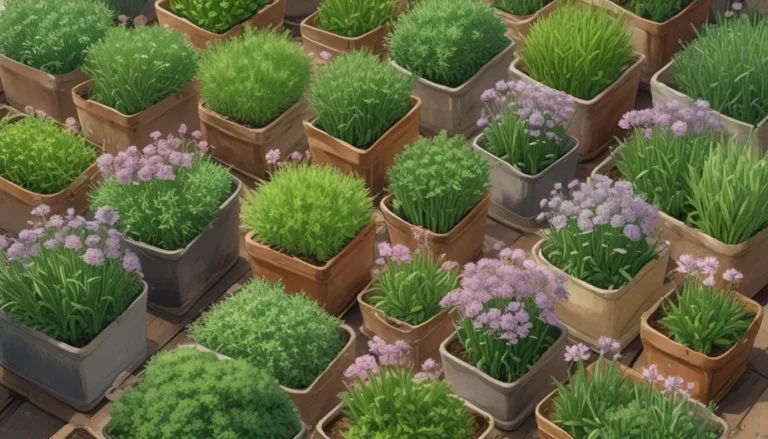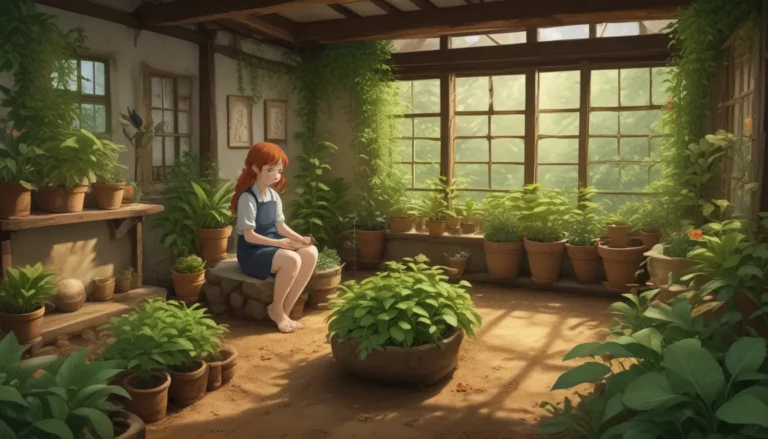The Art of Cover Cropping: A Complete Guide to Using Cover Crops in Your Garden

Are you interested in improving your garden in a sustainable way that benefits both your plants and the environment? Cover cropping might just be the solution you’re looking for. This artful science combines natural fertilizers, pest management, and soil improvement to create a thriving ecosystem for your plants to grow in.
Cover crops are not just for commercial farmers – they are equally beneficial in small garden plots and backyard spaces. By incorporating cover crops into your garden maintenance routine, you can enhance the health of your garden, reduce the need for synthetic fertilizers, and make a positive impact on the environment.
So, if you’re intrigued by the idea of cover cropping, let’s dive into the details of this clean, chemical-free soil management system that can transform your garden and local ecosystem for the better.
What You’ll Learn
Let’s start with the basics:
- What Are Cover Crops?
- Cultivation and History
- Benefits
Easy Erosion Control
One of the key benefits of cover crops is their ability to prevent soil erosion, especially during harsh weather conditions like winter. By planting cover crops in late summer or early fall, you can create a protective living mulch that keeps your soil intact and prevents erosion.
A Biodiverse Environment
Healthy garden soils are home to a variety of beneficial bacteria, fungi, and insects that promote plant growth. Cover crops help create a biodiverse environment by attracting these essential organisms, which contribute to the overall health of your garden.
Enrich Soil Fertility
Cover crops play a crucial role in improving soil fertility through processes like nitrogen fixation, nutrient cycling, and organic matter decomposition. By planting specific cover crops before or after your main vegetable crops, you can enhance the nutrient content of your soil naturally.
Improve Soil Aeration, Water Infiltration, and Water Retention
Plants with deep root systems help improve soil aeration, water infiltration, and water retention. Cover crops create a healthy soil structure that allows oxygen and water to penetrate effectively, leading to healthier plant growth.
Soil Conditioning and Stabilization
Cover crops contribute to soil conditioning and stabilization by breaking up compacted soils and adding organic matter that improves soil structure. This stable soil environment is crucial for plant growth and overall soil health.
Biofumigation and Pest Prevention
Certain cover crops like brassicas have natural pest-prevention properties that can help control soilborne diseases and pests. By incorporating these crops into your garden rotation, you can reduce the need for chemical pesticides and promote a healthier growing environment.
Weed Suppression
Cover crops are effective at suppressing weeds by outcompeting them for resources like light, nutrients, and water. Some cover crops also produce allelochemicals that inhibit weed growth, making them a valuable tool for weed management.
How to Grow Cover Crops
Now that you understand the benefits of cover cropping, let’s explore how to grow them effectively in your garden.
When Will They Grow?
Different cover crops thrive in different seasons, so it’s essential to choose plants that are suited to your region and the time of year you plan to grow them. Summer cover crops like buckwheat and soybeans are ideal for warm weather, while winter cover crops like crimson clover and winter rye are best for cooler seasons.
How Long for Crop Maturity?
Cover crops need to be terminated at the right time to maximize their benefits. Depending on the plant variety, crop maturity can vary from a few weeks to several months. Understanding the growth cycle of your cover crops will help you plan for the next planting season effectively.
How Will Plants Be Terminated?
To end the growth cycle of your cover crops, you’ll need to terminate them by cutting or tilling them. This process helps release nutrients back into the soil and prepares the space for the next crop in your rotation.
How Long for Crop Residue to Decompose?
After terminating your cover crops, you’ll need to allow time for the plant residue to decompose before planting new crops. The decomposition rate varies depending on the plant species, with some plants breaking down faster than others.
What Food Crop Will Follow?
Choosing the right cover crops based on the food crops you plan to grow next is essential for a successful garden rotation. For example, heavy feeders like tomatoes and peppers benefit from nitrogen-fixing legumes, while other crops may thrive after nutrient-scavenging grains and grasses.
Growing Tips
To get the most out of your cover crops, here are some practical tips to keep in mind:
- Mow and/or Till Early: To prevent seeds from forming and unwanted weeds from sprouting, mow or till your cover crops early.
- Allow Decomposition Time: Give your cover crops two to four weeks to decompose before planting new crops.
- Choose Fast-Growing Varieties: Opt for fast-growing cover crops like buckwheat for short-term rotations and pair grains with legumes for long-term benefits.
- Start with Buckwheat: If you’re new to cover cropping, buckwheat is an excellent choice for its easy growth and natural soil enrichment properties.
For more in-depth information on cover crop selection and cultivation, “Building Soils for Healthy Crops” by Fred Magdoff and Harold van Es is a valuable resource that provides practical insights into fostering healthy soil systems.
Types of Cover Crops
Cover crops are available in a variety of species that fall into three main categories: brassicas, grains and grasses, and legumes. Each category offers unique benefits for soil health and plant growth.
Brassicas
- Arugula
- Canola
- Mustard
- Forage Radish
Grains and Grasses
- Barley
- Buckwheat
- Oats
- Winter Rye
- Winter Wheat
Legumes
- Cowpeas
- Crimson Clover
- Hairy Vetch
- Field Peas
By exploring these different cover crop options, you can choose the right plants to suit your garden’s needs and maximize the benefits of cover cropping.
Going Green with Cover Crops
Incorporating cover crops into your gardening routine is a simple yet effective way to promote soil health, improve plant growth, and reduce environmental impact. As you embrace this sustainable practice, you’ll witness the transformation of your garden into a thriving ecosystem that supports healthy plant life and biodiversity.
If you have any questions or insights about cover cropping, feel free to share them in the comments section below. And for more soil enrichment tips, check out our related articles on sunflowers, mulching, eggshells, and plant nutrients.
Remember, every small step you take towards sustainable gardening contributes to a healthier garden and a greener environment for generations to come. Happy cover cropping!





